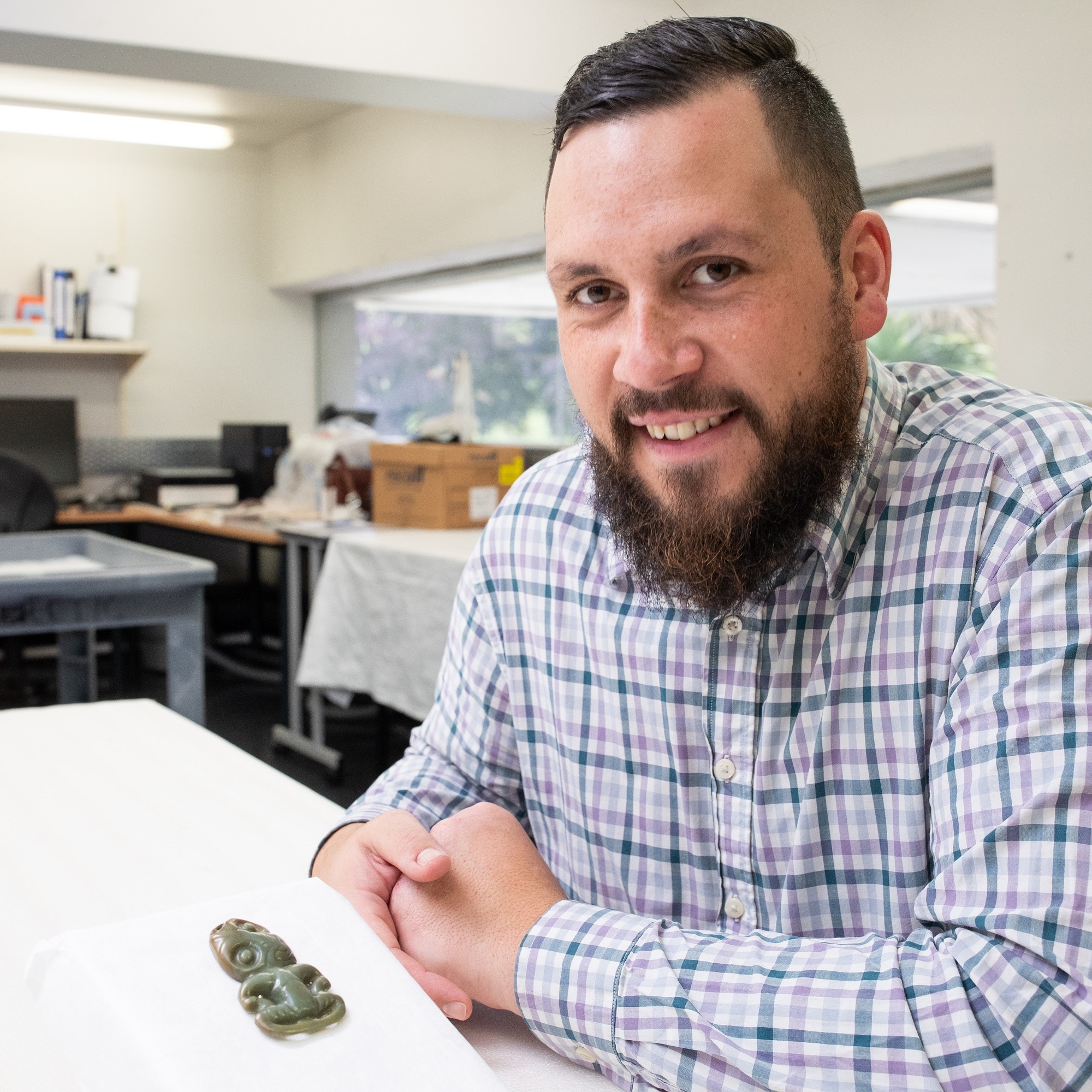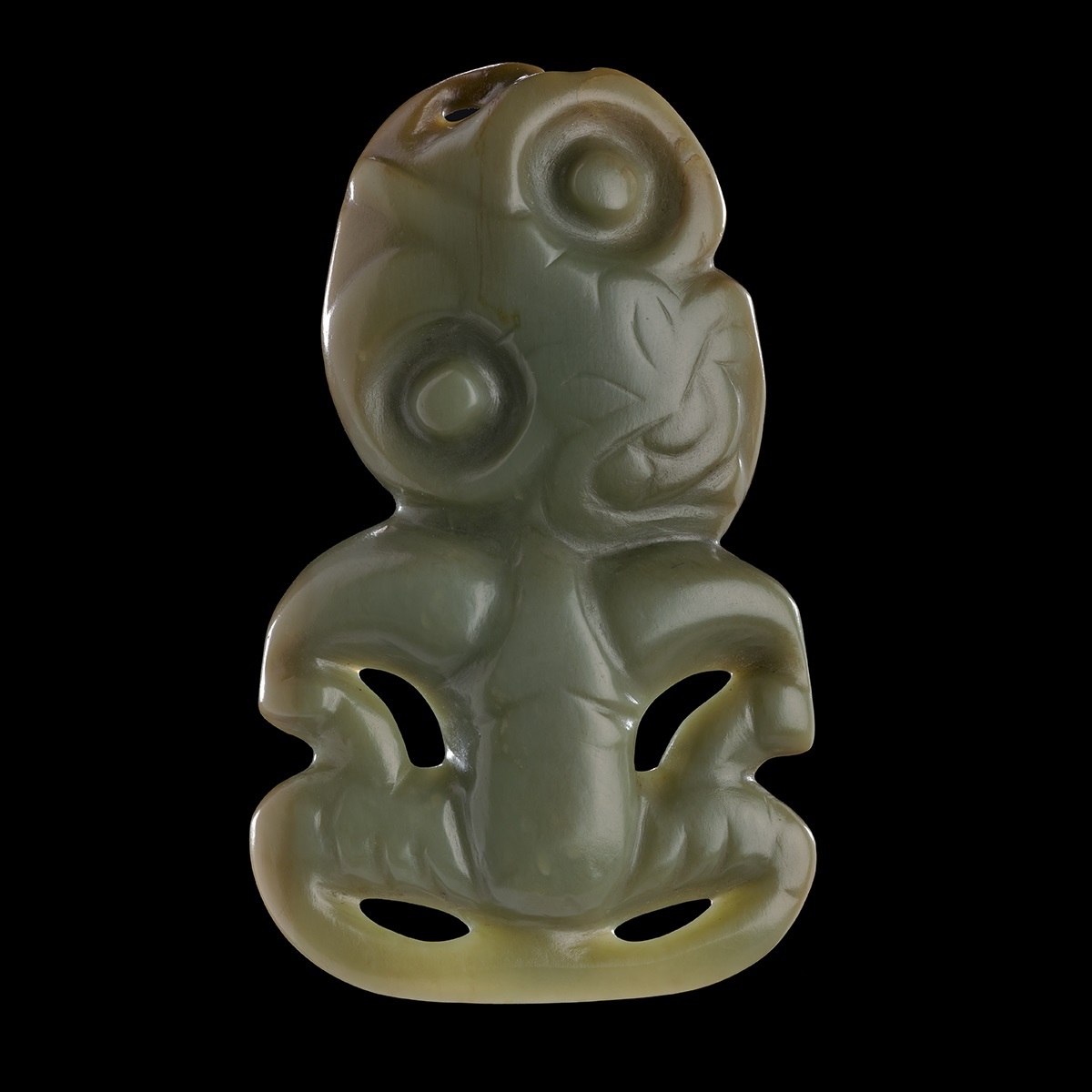As one of the earliest known pounamu hei tiki (greenstone pendants in human form) carved in Te Wai Pounamu (the South Island), the Te Aika hei tiki is an object of significant historical value. But it's particularly important to Corban Te Aika, Curator Human History (Mātauranga Māori), because it belonged to his family for more than 200 years.

The tiki was shaped from the pale pounamu variety Māori call inanga for Corban's seventh great-grandfather, who lived over 250 years ago. When this tipuna (ancestor) was interred near Kaiapoi Pā in North Canterbury, the hei tiki was buried with him in what was then a customary practice.
It was exhumed in 1831 – several generations later – as the fierce Ngāti Toa chief Te Rauparaha approached Kaiapoi Pā with a group of warriors armed with muskets. Word reached the pā's inhabitants that the raiders had been plundering graves in other settlements they had attacked. The people of Kaiapoi Pā decided to retrieve the treasures buried in graves near the pā in an attempt to stop Te Rauparaha getting them.
Corban's fourth great-grandfather, Aperahama Te Aika, then in his late teens, was charged with digging up the Te Aika hei tiki from his own great-grandfather's grave. When the pā eventually fell to Te Rauparaha's forces, Aperahama managed to escape, taking the tiki with him.

The Museum of New Zealand Te Papa Tongarewa bought the hei tiki in 1991, with the support of the Te Aika family and Canterbury Museum.
It is one of more than 200 taonga pounamu (pounamu treasures) from Te Papa's collection loaned to Canterbury Museum with the exhibition Kura Pounamu: Our Treasured Stone, which runs until 3 June 2019.





